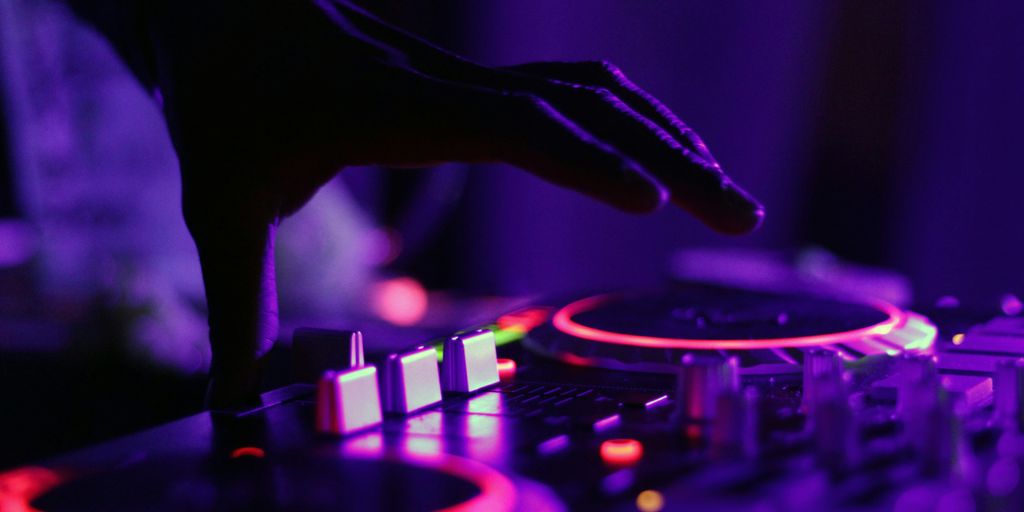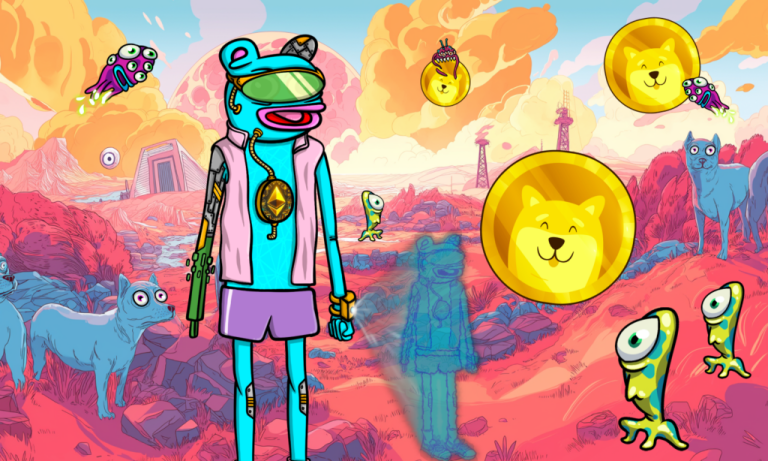
Highlife music has a vibrant history that stretches back to the early 20th century, originating from Ghana and spreading across West Africa. This genre, characterized by its catchy rhythms and lively melodies, continues to evolve, reflecting the dynamic cultures of the region. Today, highlife stands as a testament to the rich traditions and modern influences that shape its sound, making it a significant part of West African identity.
Key Takeaways
- Highlife music originated in Ghana and has evolved over the decades, influenced by jazz and swing.
- It plays a vital role in expressing cultural identity and is often featured in community celebrations.
- Modern highlife artists are blending traditional sounds with contemporary styles, gaining international recognition.
- The genre is merging with other music styles like Afrobeat and reggae, creating exciting new fusions.
- Highlife festivals continue to thrive, celebrating its legacy and introducing it to global audiences.
The Origins and Evolution of Highlife Music
Highlife music, a genre synonymous with West Africa, boasts a history as vibrant and complex as its rhythms. It’s not just music; it’s a cultural narrative, evolving through decades of social change and musical innovation. Understanding its roots is key to appreciating its modern forms.
Historical Roots of Highlife
Highlife’s story begins in the late 19th and early 20th centuries, primarily in Ghana. It emerged from a blend of local African rhythms and European musical instruments and harmonies. Think of it as a musical melting pot, where traditional drumming met colonial brass bands. Early highlife was the sound of urban areas, played in dance halls and enjoyed by a growing middle class. It was the sound of progress and excitement.
Influence of Jazz and Swing
The mid-20th century saw highlife absorbing influences from abroad, particularly jazz and swing music from America. This fusion added new layers of complexity and sophistication to the genre. Musicians began incorporating jazz harmonies, improvisation, and big band arrangements. This period marked a significant shift, pushing highlife beyond its traditional boundaries and solidifying its place as a modern, evolving art form.
Transition into Modern Highlife
Modern highlife is a testament to the genre’s adaptability. It continues to evolve, incorporating elements from various contemporary styles while staying true to its core identity. Today’s artists experiment with production techniques, instrumentation, and lyrical themes, ensuring highlife remains relevant and engaging for new generations. It’s a sound that respects its past while boldly stepping into the future.
Highlife’s journey is a story of cultural exchange and innovation. From its humble beginnings to its current global presence, the genre reflects the dynamic spirit of West Africa. It’s a reminder that music can be both a reflection of society and a powerful force for change.
Highlife’s Cultural Significance in West Africa
Highlife music isn’t just a genre; it’s a cultural cornerstone in West Africa. It’s woven into the very fabric of society, reflecting history, identity, and social commentary. It’s the sound of celebrations, the rhythm of everyday life, and a powerful voice for the people. It’s a big deal.
Music as a Reflection of Identity
Highlife acts as a mirror, reflecting the diverse identities within West Africa. It blends traditional rhythms with modern sounds, creating a unique expression of cultural pride. It’s a way for people to connect with their heritage while embracing contemporary influences. Think of it as a musical melting pot, where different sounds and stories come together to create something new and meaningful. It’s like traditional West African music but with a modern twist.
Role in Community Celebrations
Highlife is the soundtrack to countless celebrations across West Africa. From weddings to festivals, its infectious rhythms get people on their feet. It’s more than just background music; it’s an integral part of the festivities, bringing people together in joy and unity. It’s the sound of community, the rhythm of togetherness, and the heartbeat of West African celebrations. It’s hard to imagine a party without it!
Highlife and Social Commentary
Highlife has always been a vehicle for social commentary, addressing important issues and sparking conversations. Artists use their music to speak out against injustice, challenge the status quo, and advocate for change. It’s a powerful tool for raising awareness and promoting social progress. It’s not just about entertainment; it’s about using music to make a difference. Music can be a powerful tool.
Highlife music has a long history of tackling social and political issues. It’s a way for artists to express their opinions and connect with their audiences on a deeper level. It’s a tradition that continues to this day, with contemporary artists using highlife to address the challenges facing West Africa.
Modern Highlife Artists and Their Impact
Highlife music continues to evolve, thanks to a new generation of artists who are both honoring its roots and pushing its boundaries. These musicians are not just performers; they are cultural ambassadors, spreading the infectious rhythms and stories of West Africa to a global audience. It’s cool to see how they’re keeping the genre alive and relevant.
Pioneers of Contemporary Highlife
Some artists have really paved the way for modern highlife. These musicians took the classic sound and updated it for today’s listeners. They blended traditional instruments with modern production techniques, creating a sound that’s both familiar and fresh. It’s like they took the best of the old and mixed it with the new to make something totally unique. For example:
- Blending traditional highlife with elements of jazz and funk.
- Experimenting with new sounds while keeping the core highlife vibe.
- Using their music to tell stories about modern life in West Africa.
Emerging Talents in the Genre
There’s a whole wave of new artists coming up in the highlife scene, and they’re bringing their own unique styles and perspectives. These musicians are often younger and more influenced by global trends, but they still have a deep respect for the traditions of highlife. They’re not afraid to experiment and push the boundaries of the genre, which is what keeps it exciting. It’s interesting to see how they’re mixing things up.
These emerging talents are crucial for the continued growth and evolution of highlife music. They bring fresh ideas and perspectives, ensuring that the genre remains relevant and appealing to younger audiences.
Collaborations with Global Artists
One of the coolest things happening in highlife right now is the collaborations with artists from other genres and countries. These cross-cultural partnerships are helping to spread highlife music to new audiences and create some really interesting and innovative sounds. When you mix highlife with, say, hip-hop or reggae, you get something totally new and exciting. It’s a great way to introduce people to the genre who might not have heard it otherwise.
Here’s a quick look at some recent collaborations:
| Artist (Highlife) | Collaborating Artist | Genre | Song Title |
|---|---|---|---|
| Ebo Taylor | Erykah Badu | Neo-Soul | "Mind Your Own" |
| Pat Thomas | Disclosure | Electronic | "Tinka Belle" |
| K. Frimpong | Common | Hip-Hop | "Daa Ke Daa Remix" |
The Fusion of Highlife with Other Genres
Highlife’s not stuck in the past. It’s been mixing it up with other sounds for years, and that’s part of what keeps it fresh. It’s cool to see how artists are taking the core of highlife and blending it with stuff from all over the place.
Highlife and Afrobeat
Okay, so Afrobeat and Highlife? It’s a match made in music heaven. Think of it as two cousins finally collaborating. Afrobeat brings that heavy, politically charged energy, while Highlife adds its sweet melodies and guitar riffs. The result? A sound that makes you think and dance at the same time. It’s a powerful combo, and you hear it everywhere in West Africa.
Incorporating Reggae and Hip-Hop
Reggae and Hip-Hop influences are showing up more and more. Highlife artists are adding reggae’s laid-back vibes and hip-hop’s beats and flows. It’s not always a perfect mix, but when it works, it really works. You get this cool blend of African rhythms with global sounds that appeals to a younger crowd.
Cross-Cultural Collaborations
Highlife musicians aren’t just staying local. They’re teaming up with artists from all over the world. These cross-cultural collaborations are interesting. They bring new ideas and sounds into the Highlife mix, and they help spread the genre to new audiences. It’s all about sharing music and making something new together.
It’s interesting to see how Highlife is evolving. It’s not just about preserving the old sound, but also about experimenting and pushing boundaries. This fusion with other genres is what will keep Highlife alive and relevant for years to come.
Highlife Music Festivals and Events

Highlife isn’t just music; it’s a whole vibe, and what better way to experience it than at a festival? These events are popping up all over, celebrating both the legends and the new cats keeping the genre alive. It’s a chance to really immerse yourself in the culture.
Major Highlife Festivals in Ghana
Ghana, the home of Highlife, naturally hosts some of the biggest and best festivals. These aren’t just concerts; they’re cultural experiences. You’ll find everything from traditional dances to modern interpretations of Highlife, all in one place. It’s a real celebration of Ghanaian identity. The Habari Africa Live Festival is a great example of this.
Celebrating Highlife in Nigeria
Nigeria has embraced Highlife, adding its own unique flavor to the mix. You’ll find festivals that blend Highlife with Afrobeat and other genres, creating a sound that’s distinctly Nigerian. It’s a testament to the genre’s ability to evolve and adapt. Lagos is a hub for this, with several events showcasing the best of Nigerian Highlife.
Global Highlife Events
Highlife is going global! You’ll find festivals and events celebrating the genre all over the world, from Europe to North America. These events are a testament to the music’s universal appeal and its ability to connect people from different cultures. It’s amazing to see how Highlife has spread its wings and is now being enjoyed by a global audience. These music festivals are a great way to experience the genre.
The Future of Highlife Music
Innovations in Highlife Production
Highlife’s future hinges on its ability to evolve. Producers are experimenting with digital audio workstations (DAWs) and incorporating electronic elements, creating a fresh sound while retaining the genre’s core identity. This includes using new synth sounds, drum patterns, and mixing techniques. The goal? To make highlife more appealing to younger audiences and global listeners without losing its authenticity.
Youth Engagement and Highlife
The key to highlife’s survival is getting young people involved. This means making the music relatable to their experiences and tastes. Here’s how:
- Educational programs in schools to teach about highlife’s history and cultural significance.
- Creating platforms for young artists to showcase their highlife-inspired music.
- Using social media to promote highlife and engage with younger audiences.
Highlife needs to be seen as more than just "old people’s music." It needs to be presented as a vibrant, relevant art form that speaks to the present and future.
Preserving Highlife Heritage
Preserving highlife’s heritage is just as important as innovating. We need to ensure that the foundational elements of highlife are not lost as the genre evolves. This involves:
- Archiving classic highlife recordings and making them accessible to the public.
- Supporting veteran highlife musicians and honoring their contributions.
- Promoting the use of traditional instruments in modern highlife music. The new GRAMMY category will help with this.
Final Thoughts on Highlife’s Cultural Impact
In wrapping things up, Highlife music really shows how culture can adapt and thrive. It’s not just about the catchy tunes or the dance moves; it’s about the stories and emotions that connect people. Today, as artists mix traditional sounds with modern vibes, Highlife continues to evolve, drawing in new fans around the world. This genre is a living testament to West Africa’s rich heritage and its ability to inspire. So, whether you’re at a local festival or listening to a track online, remember that Highlife is more than just music—it’s a celebration of life, community, and the vibrant spirit of a culture that keeps pushing forward.
Frequently Asked Questions
What is Highlife music?
Highlife music is a popular genre that started in Ghana. It mixes traditional African rhythms with Western instruments, creating lively and danceable tunes.
How did Highlife music begin?
Highlife music began in the early 20th century. It was influenced by local traditions and Western styles like jazz and swing.
What role does Highlife play in West African culture?
Highlife music reflects the identity of the people and is often played at community celebrations, helping to bring people together.
Who are some famous modern Highlife artists?
Some well-known modern Highlife artists include E.T. Mensah, Amakye Dede, and the newer talents like KiDi and Kuami Eugene.
How has Highlife music changed over time?
Highlife has evolved by mixing with other genres like Afrobeat and hip-hop, making it more popular among younger audiences.
Are there any major Highlife music festivals?
Yes! There are several Highlife festivals in Ghana and Nigeria, celebrating the music and its cultural importance through performances and events.






